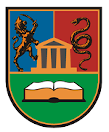Молимо вас користите овај идентификатор за цитирање или овај линк до ове ставке:
https://scidar.kg.ac.rs/handle/123456789/19501Пун извештај метаподатака
| Поље DC-а | Вредност | Језик |
|---|---|---|
| dc.rights.license | CC0 1.0 Universal | * |
| dc.contributor.author | Janevska, Tamara N. | - |
| dc.date.accessioned | 2023-11-28T18:45:20Z | - |
| dc.date.available | 2023-11-28T18:45:20Z | - |
| dc.date.issued | 2023 | - |
| dc.identifier.issn | 1450-8338 | en_US |
| dc.identifier.uri | https://scidar.kg.ac.rs/handle/123456789/19501 | - |
| dc.description | The research was funded by the Ministry of Science, Technological Development and Innovation of the Republic of Serbia (Agreement on the Realization and Funding of Scientific Research NIO in 2023 no. 451-03-47/2023-01/200198). | en_US |
| dc.description.abstract | The paper presents the results of a study devoted to the examination of students’ metaphoric competence. The participants received no precoding training, or structured metaphorical input. The study was based on The Economist’s climate change coverage, a film titled “Climate change technology: Is shading the earth too risky?”, which was a part of an English composition assignment. We transcribed the oral data and, following the MIPVU (Steen 2010), identified sentences which contained at least one lexical unit that was metaphorically used. The students were asked to complete a questionnaire that was organized in accordance with our research goals. Namely, our study tested the students’ ability to distinguish between metaphorical and literal meaning in order to check their intuitions about what constitutes a metaphor. They were also asked to translate the given sentences into Serbian so that we could examine how they deal with metaphor in translation. The results suggest that the differences in translation are caused by the availability of the conventionalized metaphorical senses across the SL and TL lexicon. The research offered insight into students’ metaphoric competence prior to any exposure to Conceptual Metaphor Theory (Lakoff, Johnson 1980), which could be contrasted with the results obtained after a structured metaphorical input. | en_US |
| dc.language.iso | en | en_US |
| dc.publisher | University of Kragujevac, Faculty of Filology and Arts | en_US |
| dc.rights | info:eu-repo/semantics/openAccess | - |
| dc.rights.uri | http://creativecommons.org/publicdomain/zero/1.0/ | * |
| dc.source | Lipar, časopis za književnost, jezik, umetnost i kulturu | - |
| dc.subject | metaphoric competence | en_US |
| dc.subject | metaphor identification | en_US |
| dc.subject | metaphor translation | en_US |
| dc.subject | Serbian EFL learners | en_US |
| dc.subject | Conceptual Metaphor Theory | en_US |
| dc.subject | news discourse | en_US |
| dc.title | EXAMINING SERBIAN EFL LEARNERS’ METAPHORIC COMPETENCE: METAPHOR IDENTIFICATION AND TRANSLATION | en_US |
| dc.title.alternative | METAFORIČKA KOMPETENCIJA UČENIKA ENGLESKOG JEZIKA KAO STRANOG: IDENTIFIKACIJA I PREVOĐENjE METAFORIČKIH JEZIČKIH IZRAZA | en_US |
| dc.type | article | en_US |
| dc.description.version | Published | en_US |
| dc.identifier.doi | 10.46793/LIPAR81.175J | en_US |
| dc.type.version | PublishedVersion | en_US |
| Налази се у колекцијама: | The Faculty of Philology and Arts, Kragujevac (FILUM) | |
Датотеке у овој ставци:
| Датотека | Опис | Величина | Формат | |
|---|---|---|---|---|
| Lipar 81-175-195.pdf | 180.34 kB | Adobe PDF |  Погледајте |
Ова ставка је заштићена лиценцом Креативне заједнице


